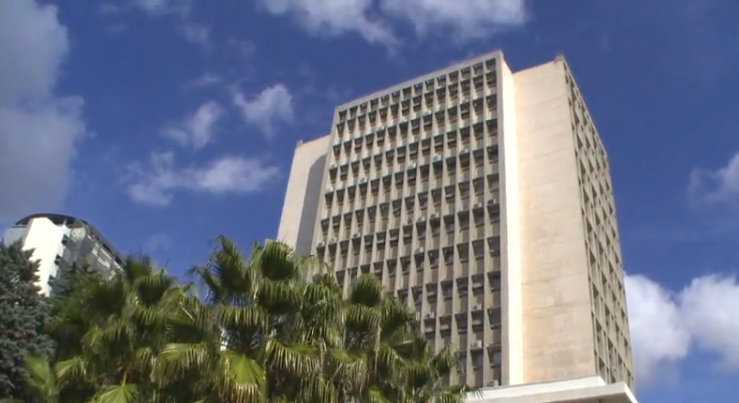
Activity area(s)
Flow cytometry, cell sorting, cell metabolism analysis, large particules analysis and sorting
Presentation
CytoMed is the flow cytometry core facility of IRCAN, created the 1st January 2012 and located at the 5th floor of the Pasteur Tower in the campus of the Faculty of medicine of Nice. CytoMed, that belongs to the Microscopy and Imagery network of Cote d’Azur (MICA) that gives the access to CytoMed technologies to the whole scientific community.
The aim of CytoMed is to develop a core facility with state of the art technologies and technics in flow cytometry in order to develop high quality projects in basic science, translational science or personalized medicine. The global aim of CytoMed is to give to the scientific community the opportunity to analyze and sort, in a high throughput and real time manner, a large variety of cells depending on multiple parameters of cell size, cell shape, cell fluorescence, cell metabolism… CytoMed is composed of a scientific supervisor (Julien Cherfils-Vicini) and a technical supervisor (Ludovic Cervera), which take care of all the technical operations.
Until now, CytoMed is equipped with different cell sorters and flow cytometers:
- BD ARIA III, a cell sorter equipped with 5 lasers allowing us to analyze and sort cells on up to 18 parameters simultaneously in a high throughput manner (10,000 cells per seconds). We can sorts until 4 populations simultaneously or run for a single cell cloning and sorts cells on a wide variety of support (tubes, plates, slides…)
- UnioBiometrica BioSorter, a large particle cell sorter. The Biosorter allow us to sort particles from 10µm of diameter until 2000µm, including cellular mass like neurospheres or pancreatic islet, very big cells but also small model organism like drosophila larvae, c.elegans or any structure like yeast encapsulated bead for instance. Thanks to a low-pressure system, fragile cells like adipocytes or neurons are also sorts with a very high viability. Moreover, the Biosorter is able to scan the profile of the object that is analyzed and to locate and integrate the fluorescence inside the profile.
- 2 Analyzers (FACS Calibur, 4 colors and FACS Canto A, 6 colors), for all classical application in flow cytometry like phenotyping or cell cycle analysis
- Seahorse Analyzer, which is a metabolism analyzer. By quantifying in real time the consumption of the oxygen in the medium and the extracellular acidification, the Seahorse is able to determine the metabolism of the cells and to calculate whether the cells of interest is metabolic or not.
The implementation of all these technologies on the same core facility, allowing us to analyze and sort a wide variety of cells or structures on multiple parameters (size, fluorescence, mass…), make CytoMed a single platform in Europe
Coordinator
- Dr Julien CHERFILS-VICINI
Type of structure
- IRCAN’s core facility
Recognition by
- INSERM, CNRS, UNS
Location
- Faculty of Medicine of Nice, Pasteur tower, 5th floor
Contact name
- Julien CHERFILS-VICINI
Contact mail
- Julien.cherfils@unice.fr
Skills of the team members
- Flow cytometry & Cell sorting
- Large particules sorting
- Cell metabolism analysis
- Single cell cloning
- High throughput flow cytometry
- Multiparametric flow cytometry
Contribution to the FHU
WP and Task :
Technical support for pathologies associated WP and transversal WP (genome stability, immunology and metabolism)
Website contact: http://ircan.org/index.php?Itemid=68
Five relevant publications from the last five years related to the platform activity
Hofman P et al. Genetic and pharmacologic inactivation of P2RX7 is associated with increased tumor incidence in the mouse model of colitis-associated cancer. Cancer Res., 2015
Wagner KD et al. . Inducible knockout of Wt1 in vascular and myeloid cells leads to tumour regression. Nature Communication, 2014
El Maï M et al. The Telomeric Protein TRF2 Regulates Angiogenesis by Binding and Activating the PDGFRβ Promoter. Cell Rep. 2014
Marçais A, et al The metabolic checkpoint kinase mTOR is essential for IL-15 signaling during the development and activation of NK cells. Nat Immunol. 2014.
Biroccio A*, Cherfils-Vicini J*, Augereau A*, et al. TRF2 inhibits a cell-extrinsic pathway through which Natural Killer cells eliminate cancer cells Nature Cell Biology, 2013 (* equal contribution).
